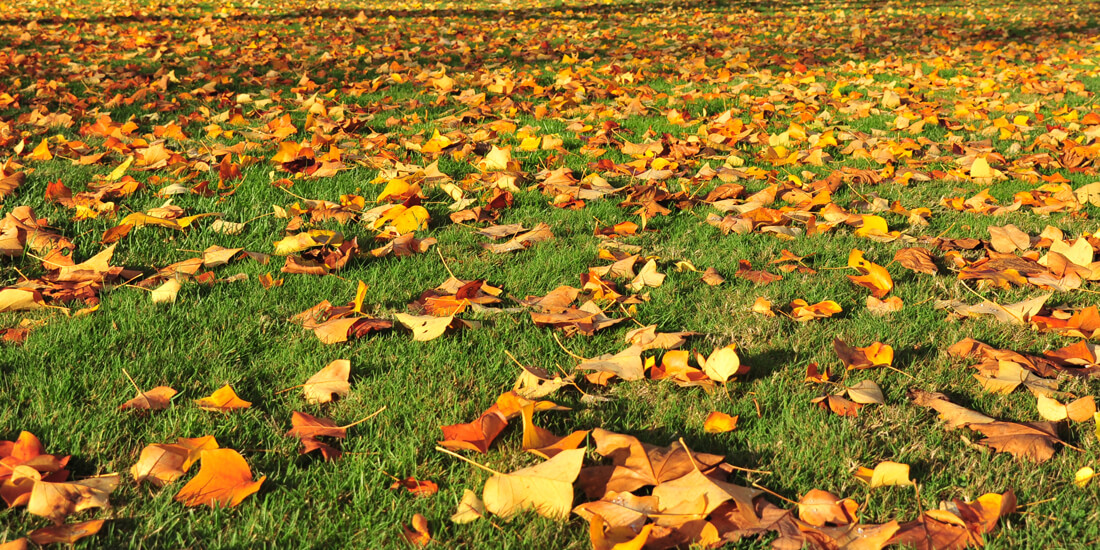7 quick tips for a better lawn this autumn / winter

We will also talk about autumn / winter lawn feed, your last autumnal cut before winter and general lawn care for this time of year.
Get a better lawn this Winter with our 7 Quick Tips
1. Keep off the grass
There’s a reason they make those ‘Keep off the grass’ placards! During colder / wet weather your soil surface can become compacted. As the soil dries in the cold, it can become extremely hard. And, if you were to take a pitchfork to it you may find it hard to break up. This causes all sorts of issues with your lawn that may not seem like a big deal in winter but they will be a problem in spring.
Poor drainage, increased susceptibility to disease and dying / yellowing grass can occur with compacted soil. To avoid this, try not to walk on the lawn during frosts or introduce too much heavy play when the cold sets in. Walking and playing on the grass in cold weather will contribute to compaction.
2. Stay disease free
The best way to avoid disease in your lawn is to feed it the nutrients it needs to perform its best. An autumn / winter fertiliser is to protect the lawn against disease. You will notice that these seasonal fertilisers will not contain a high level of nitrogen, which is the ideal approach.
A lusciously green lawn through winter is lovely, but what’s even nicer than that? Grass that’s still alive! Autumn / winter fertilisers contain slightly higher levels of phosphate and potassium. This makes them excellent at strengthening your lawn's root system and hardening it up to protect it against disease.
We have two autumn / winter fertilisers – quick release and slow release. If you’ve left it a bit late in the season, opt for the quick release. If you want more protection for longer (our recommendation) then go for a slow-release fertiliser and protect your lawn for almost 3 times longer.
We have a separate page that goes into more detail about the benefits of fertilising your lawn in autumn.
3. Remove leaves
Orange, red and brown leaves are a welcome sight for most people as the seasons change. But, if you love your lawn, you’ll know that it's best to get any leaves removed from your lawn before wetter weather sets in.
Wet / sodden leaves on your lawn add an extra layer of moisture to your grass which in this case isn’t helpful. The water saturates the grass underneath and can damage its growth.
But it isn’t all bad news – you can use leaves as mulch around trees and other garden plants, or even brush them off to the side in a border to create a wildlife hibernaculum.
4. Cut above the rest
Yes, we miss the summer days of super short grass and extremely close mowing too – but those low mowing heights won’t withstand winter.
Grass will still grow (albeit a little bit slowly) above temperatures of 5 degrees, so if you are planning to mow make sure you adjust your mower height to higher than you usually would. Cutting grass too low makes it vulnerable to frost, disease and further damage it will struggle to recover from.
5. Stay sharp
Just as it isn’t a great idea to mow your grass extremely short in colder weather, it’s also not the best idea to mow it with blunt blades.
Gents, if you’ve ever tried to shave your stubble with blunt blades – you’ll know all about it! Poor results, damaged grass and dare we say… a damaged ego when the lawn looks worse off than it did before you cut it! Sharpen those blades, save your grass… and save face!
6. Say no to snow!
Do you want to build a snowman? Yes – but not on the lawn! Building a snowman is a whimsical family fun activity, but the damage it can leave on your grass will last longer than the snow will.
If you walk on your lawn where there is snow and build snowmen, you may compact the soil and increase the risk of fungal diseases such as Fusarium Patch – not quite as fun! However, we’re not total party poopers here – if you do build a snowman and your lawn suffers damage, you can prepare to repair it in spring.
7. Lend a helping hand
Grass, for the (most) part, is a very hard-wearing organism and even if it doesn’t get the care it needs, it will (mostly) still reward you with a fully functioning lawn. However, there are tasks you can do throughout the year to help your lawn out.
Aeration helps in many ways – alleviates compaction, improves drainage and can greatly enhance your soil conditions. Aeration can be done by essentially spiking your lawn using a pitchfork for a small area or a hollow tine aerator for a larger area, these spikes / holes in your lawn help your lawn to breathe a little – and we can all appreciate that!
Did you know you can also sow grass seed in November? Or that one of the best times to sow wildflower seed in your garden is in autumn?